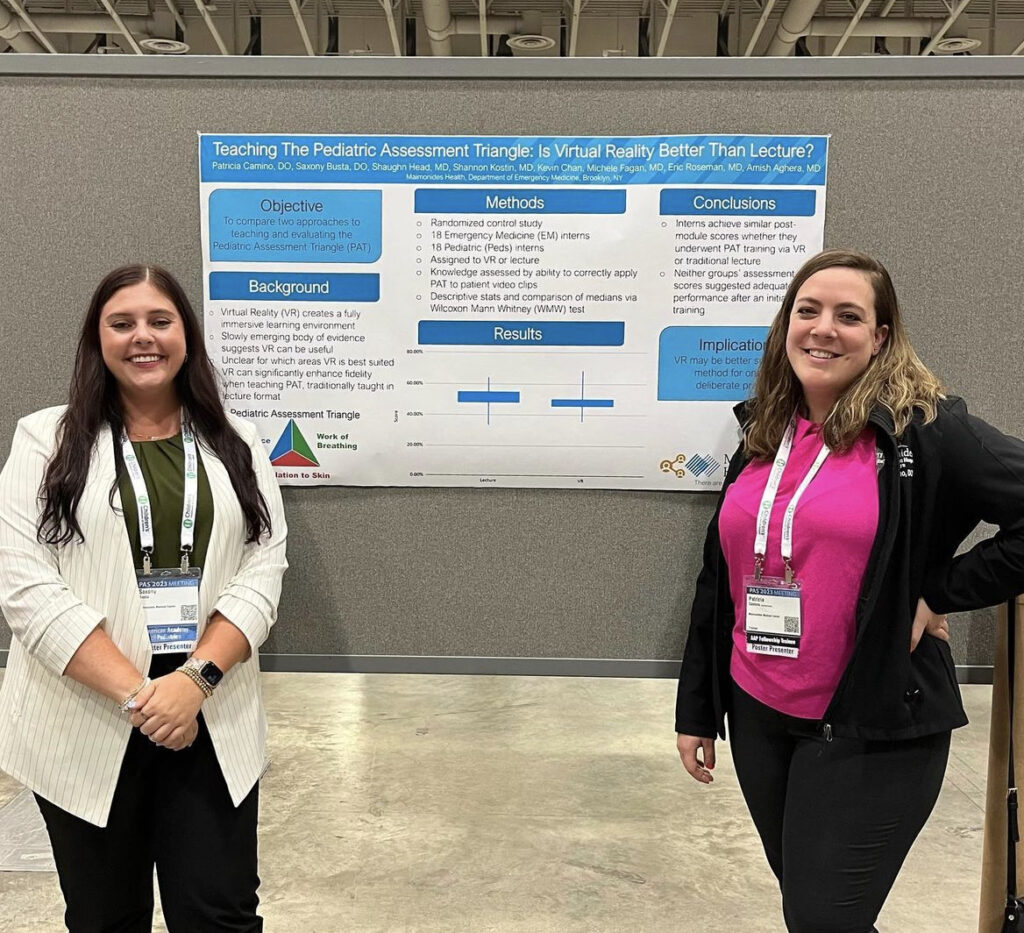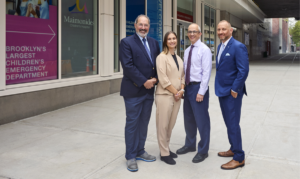Not only is Maimonides Children’s Hospital leading the way in care for kids, but our researchers are also active in efforts that may change the future of medical education.
Virtual reality – or VR – isn’t just for video games. Dr. Patricia Camino, a third-year Pediatric Emergency Medicine fellow, has researched the use of VR as a tool in medical education. Because VR creates and allows users to engage with a simulated environment, medical students and resident physicians can gain experience in encountering and caring for patients in a safe, low-stakes way.
Understanding the Research
During the Pediatric Advanced Life Support (PALS) course, medical trainees commonly learn the Pediatric Assessment Triangle or PAT. In the summer of 2022, Dr. Camino designed a randomized control study in which some emergency medicine and pediatric residents completed a VR version of PAT, and other residents completed the standard lecture version. The residents then completed a post-module assessment and a survey.
Preliminary data analysis showed that pediatric and emergency interns had higher useability scores in the survey sections on enjoyment and attitude towards training for VR vs. lecture, allowing the research team to extrapolate a preference for VR training in this case. Post-training assessments showed similar scores for VR and traditional lecture.
“With our preliminary data, we concluded VR might be better suited as a method for ongoing, deliberate practice rather than initial learning, but this needs additional investigation,” said Dr. Camino. “The crossover data where we can compare the interns’ scores to themselves is still being analyzed.”
Dr. Camino presented her research at multiple professional meetings. “When presenting, I received mostly positive feedback detailing how novel the study is, including written feedback stating the idea was interesting and warranted further investigation,” she said.
Additional research is needed on the use of VR in medical education, but its use cases are promising.
Why the Research Matters
VR may be a way for students in medical school – as well as healthcare providers undergoing required ongoing training – to virtually step into high-stakes healthcare situations and practice providing critical care.
“Often, it is hard to suspend reality even when using high-fidelity mannequins,” explains Dr. Camino. “VR offers a more immersive experience.”
Finding ways to teach the PAT and other modules in more impactful ways can help healthcare workers develop and practice skills they’ll be using when treating children. Dr. Camino believes this is particularly significant for her emergency medicine colleagues who practice in community hospitals that may not have physicians trained in pediatrics or pediatric emergency medicine.
“Sick kids can be scary,” she says. “Especially for those whose training is not focused solely on pediatrics.” Dr. Camino believes that the more ways healthcare workers can practice emergency pediatric medicine in life-like environments, the better.
Get Care Now
We are the only children’s hospital in Brooklyn and committed to supporting our communities. To learn more about our children’s services or to refer a patient, visit our website or call 218-283-7500.




